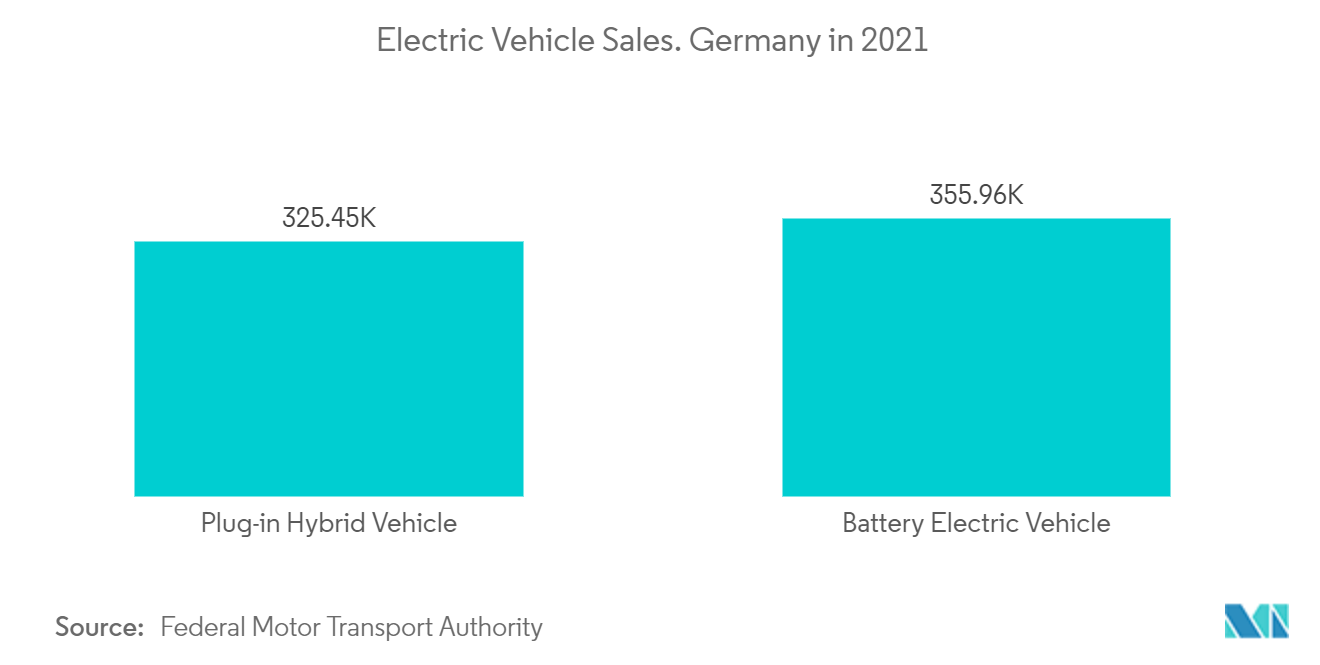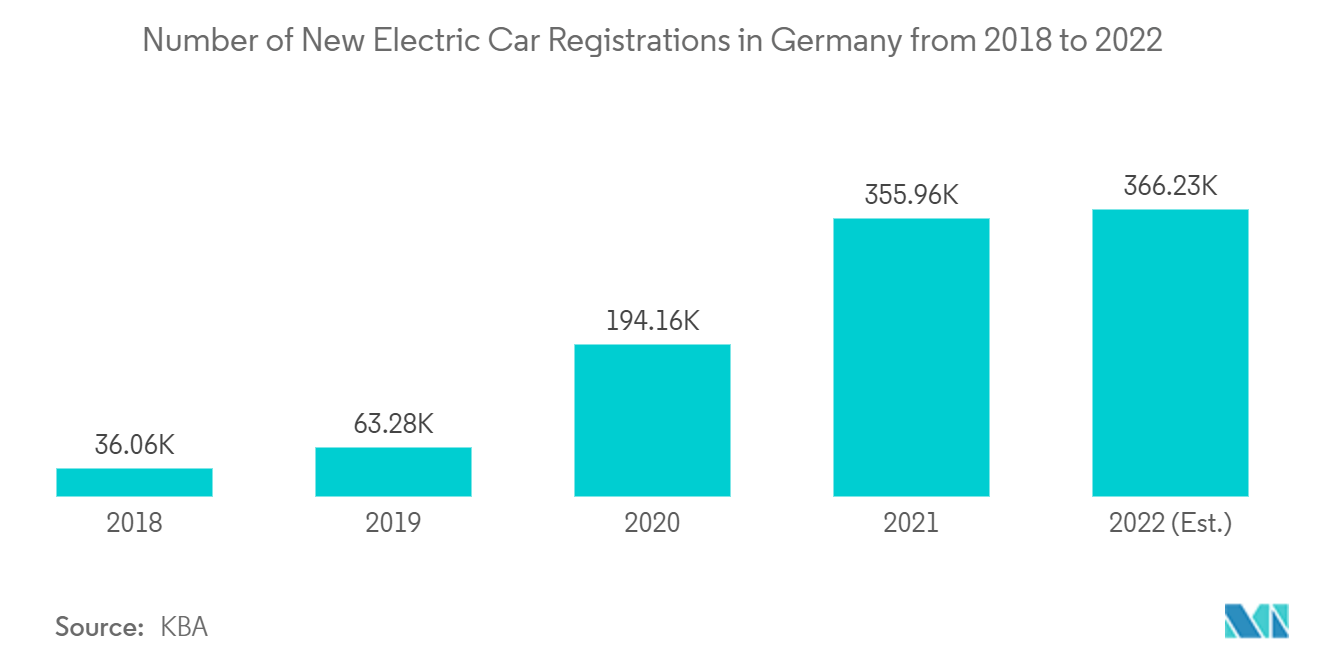Market Trends of Germany Automotive High Performance Electric Vehicles Industry
This section covers the major market trends shaping the Germany Automotive High Performance EVs Market according to our research experts:
Increasing Popularity of Electric Vehicles in Germany will Drive the Market
According to the Federal Motor Transport Authority, a quarter more electric cars were registered in Germany in the first half of 2022 than in the same period the previous year. It increased the proportion of fully electric vehicles to 13.5% of all new registrations during that period. Overall, registrations of alternative-drive cars (battery electric vehicles, hybrids, plug-in hybrids, hydrogen fuel cell vehicles, and gas vehicles) increased by 14.2%, accounting for nearly half of all new car registrations. During the reporting period, German brands accounted for 50.6% of new passenger car registrations with electric drive.
Germany plans to have 15 million electric vehicles on the road by 2030. Moreover, The German Federal Government is also actively encouraging plug-in electric car use. Moreover, following the increase in BEV subsidies from June 2020, the market share of BEVs continuously increased. Aside from the environmental benefits, the growth is fueled by the increasing availability of electric vehicles on the market.
However, the country's increasing popularity of electric vehicles can be seen. Therefore the government of Germany is also expected to reduce financial incentives for purchasing electric cars next year, as the growing popularity renders government subsidies obsolete. E-vehicles are becoming increasingly popular and will no longer require government subsidies shortly. Subsidies for purely electric vehicles priced under EUR 40,000 (USD 40,488) will be reduced to EUR 4,500 (USD 4794.82) from EUR 6,000 (USD 6393.09) at the start of next year and to EUR 3,000 ( USD 3196.55) by 2023, according to the plan. According to government sources, the incentives paid to electric car buyers will expire once EUR 3.4 billion (USD 3.44 billion) from the next two years' budget is spent.
The increasing trend of EVs is also expected to benefit the high-performance EVs in the market as customers with HNWI may show interest in purchasing them.
Furthermore, Germany decided on an interim target of reducing greenhouse gas emissions from the transportation sector by 48.1% from 1990 levels by 2030. The expansion of the EV market is critical for this. The country already passed the one million electric vehicle mark. Half of these are BEVs, with the other half being PHEVs.

Government Participation will Drive the Market
Germany committed to becoming carbon neutral by 2045. The country includes primary targets of reducing emissions by at least 65% by 2030 and 88% by 2040, compared to 1990 levels. Transportation contributes 20% of total emissions in the country. Increasing the number of electric vehicles (EVs) on the road is critical for the country to meet these targets.
After China and the United States, the country ranked third in total EV sales in 2021. It contributed approximately 11% of global EV sales. On a year-over-year (y-o-y) basis, the country reported a 73% increase in EV sales in 2021. The government and German automakers are pushing hard to make Germany the most significant European market and producer. They are working collectively to support the mass acceptance of electric vehicles in the country.
As part of the Corona economic stimulus package 2020, the German Federal Government introduced the innovation bonus, doubling the state share of the environmental bonus. The scheme was set to expire at the 2021 end, but the federal government agreed in November 2020 to extend it until the 2025 end. According to current funding, subsidies of up to EUR 9,000 (USD 9589.64) for a purely electric vehicle and up to EUR 6,750 (USD 7192.23) for a PHEV will be available until the 2022 end. The amount of the subsidy will be determined by the new federal government beginning in 2023. Moreover, the government in Germany also took a few steps to grow EVs in the country. For instance,
- October 2022: As part of its push toward net zero emissions, the German government approved a plan to spend EUR 6.3 billion (USD 6.1 billion) over three years to rapidly expand the number of charging stations for electric vehicles across the country. The plan calls for a 14-fold increase in the number of charging stations, from currently around 70,000 to 1 million by 2030.
Thus, the factors mentioned above may help the growth of High-performance electric vehicles in the country.

